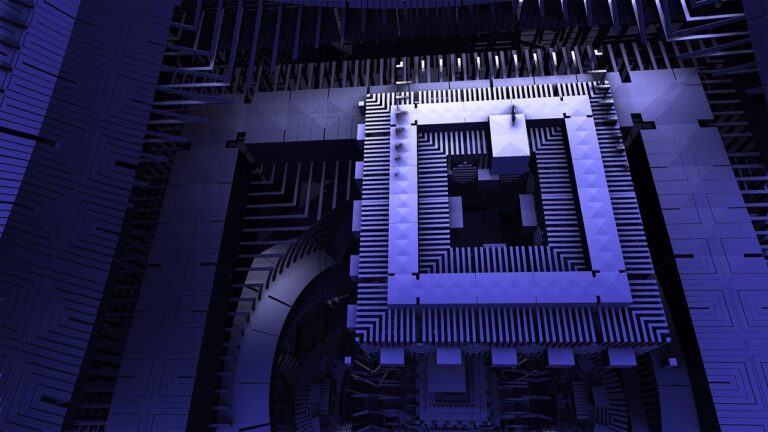The 5 Most Effective Edge Computing Strategies for Ultra-Low Latency Trading
Every microsecond matters in modern financial markets. High-frequency trading firms spend millions to reduce latency by nanoseconds.
Traditional cloud computing introduces unacceptable delays for time-sensitive financial applications.
Data must travel to distant data centers, get processed, and return with results.
But edge computing brings computation directly to the source of financial data.
Processing happens at exchange co-location facilities, cellular towers, and network edge nodes.
Latency drops from milliseconds to microseconds. Response times become nearly instantaneous.
Professional trading firms are deploying edge infrastructure to gain competitive advantages.
Investment banks use edge computing for real-time risk management and fraud detection.
Payment processors leverage edge nodes to reduce transaction processing times.
The same edge technologies are becoming accessible to individual traders and smaller firms.
Welcome to the edge revolution in finance, where proximity to data determines competitive advantage.
Edge Computing Fundamentals: Distributed Processing Architecture
Edge computing represents a fundamental shift from centralized cloud processing to distributed computation at network edges.
Proximity-based processing advantages.
Edge computing places processing power as close as possible to data sources.
This proximity dramatically reduces network latency and improves response times.
Edge processing can reduce round-trip times from hundreds of milliseconds to microseconds.
Understanding proximity benefits helps identify optimal edge deployment strategies.
Distributed intelligence implementation.
Edge nodes can make autonomous decisions without consulting central systems.
This distributed intelligence enables real-time responses to local conditions.
Autonomous edge processing can continue operating despite network connectivity issues.
Understanding distributed intelligence helps design resilient edge financial systems.
Bandwidth optimization benefits.
Edge processing can reduce bandwidth requirements by processing data locally.
Only processed results need to be transmitted to central systems.
This optimization can significantly reduce network costs and improve performance.
Understanding bandwidth optimization helps design efficient edge architectures.
Real-time processing capabilities.
Edge computing enables real-time processing of financial data streams.
These capabilities can support microsecond-level decision making and execution.
Real-time edge processing can provide competitive advantages in time-sensitive applications.
Understanding real-time capabilities helps optimize edge system design for financial applications.
Co-location Edge Strategies: Exchange Proximity Computing
Co-location facilities at financial exchanges provide the ultimate edge computing environment for trading applications.
Exchange co-location advantages.
Co-location places trading systems within exchange data centers for minimum latency.
These facilities provide direct access to exchange matching engines with microsecond latency.
Co-location can provide significant speed advantages for high-frequency trading strategies.
Understanding co-location benefits helps evaluate edge deployment strategies for trading.
Cross-connect optimization.
Direct cross-connects between systems can eliminate network switching delays.
These connections can reduce latency to the theoretical minimum for the distance.
Cross-connect optimization can provide nanosecond-level latency improvements.
Understanding cross-connect strategies helps optimize co-location edge deployments.
FPGA acceleration integration.
Field-programmable gate arrays can provide hardware-level processing acceleration.
FPGAs can implement trading algorithms directly in hardware for maximum speed.
FPGA acceleration can reduce processing latency to sub-microsecond levels.
Understanding FPGA integration helps maximize co-location edge performance.
Market data processing optimization.
Edge processing can handle market data feeds directly at exchange facilities.
This processing can identify trading opportunities with minimal latency.
Market data optimization can provide significant advantages for algorithmic trading.
Understanding market data processing helps optimize edge trading strategies.
Network Edge Infrastructure: Telecommunications Integration
Network edge infrastructure leverages telecommunications infrastructure to provide distributed processing capabilities.
5G edge computing platforms.
5G networks provide edge computing capabilities at cellular base stations.
These platforms can support low-latency financial applications for mobile users.
5G edge computing can enable new categories of mobile financial services.
Understanding 5G edge capabilities helps identify mobile financial opportunities.
Content delivery network integration.
CDN edge nodes can be repurposed for financial data processing and caching.
These nodes provide global distribution of processing capabilities.
CDN integration can provide cost-effective edge computing for financial applications.
Understanding CDN integration helps optimize global edge deployment strategies.
Internet exchange point utilization.
Internet exchange points provide natural locations for financial edge computing.
These facilities offer connectivity to multiple networks and data sources.
IXP deployment can provide strategic advantages for multi-market financial applications.
Understanding IXP opportunities helps optimize edge network strategies.
Submarine cable landing stations.
Cable landing stations provide edge computing opportunities for international financial data.
These facilities can process financial data as it arrives from international sources.
Cable station edge computing can provide advantages for global financial applications.
Understanding cable station opportunities helps optimize international edge strategies.
Real-Time Risk Management: Edge-Based Risk Controls
Edge computing enables real-time risk management that can respond to market conditions within microseconds.
Position monitoring automation.
Edge systems can monitor positions and exposures in real-time.
These systems can trigger risk controls automatically when limits are exceeded.
Real-time position monitoring can prevent losses from rapid market movements.
Understanding position monitoring helps implement effective edge risk management.
Volatility-based risk adjustment.
Edge systems can adjust risk parameters based on real-time volatility measurements.
These adjustments can optimize risk-return trade-offs dynamically.
Volatility-based adjustment can improve risk management effectiveness.
Understanding volatility adjustment helps optimize edge risk management systems.
Correlation breakdown detection.
Edge systems can detect correlation breakdowns in real-time.
These systems can adjust risk models and hedging strategies automatically.
Correlation monitoring can prevent losses during market stress periods.
Understanding correlation detection helps implement robust edge risk management.
Liquidity risk assessment.
Edge systems can assess liquidity conditions in real-time.
These assessments can adjust trading strategies based on current market conditions.
Liquidity assessment can prevent execution problems during stressed conditions.
Understanding liquidity assessment helps optimize edge trading and risk management.
Payment Processing Edge: Transaction Optimization
Edge computing can dramatically improve payment processing speed and reliability.
Point-of-sale edge processing.
Edge computing at point-of-sale terminals can reduce transaction processing times.
These systems can perform fraud detection and authorization locally.
POS edge processing can improve customer experience and reduce costs.
Understanding POS edge computing helps optimize payment processing systems.
ATM network optimization.
Edge computing at ATM locations can improve transaction processing and security.
These systems can perform local authentication and fraud detection.
ATM edge computing can reduce network dependencies and improve reliability.
Understanding ATM edge optimization helps improve banking infrastructure.
Mobile payment acceleration.
Edge computing can accelerate mobile payment processing and verification.
These systems can reduce payment confirmation times significantly.
Mobile payment edge computing can improve user experience and adoption.
Understanding mobile payment edge computing helps optimize payment systems.
Cross-border payment optimization.
Edge computing can optimize cross-border payment routing and processing.
These systems can select optimal payment paths based on real-time conditions.
Cross-border edge optimization can reduce costs and improve speed.
Understanding cross-border edge computing helps optimize international payment systems.
Fraud Detection Edge: Real-Time Security
Edge computing enables real-time fraud detection that can prevent fraudulent transactions before they complete.
Transaction pattern analysis.
Edge systems can analyze transaction patterns in real-time.
These systems can identify suspicious activities immediately.
Real-time pattern analysis can prevent fraud before financial losses occur.
Understanding pattern analysis helps implement effective edge fraud detection.
Behavioral biometrics processing.
Edge systems can process behavioral biometrics for user authentication.
These systems can detect account takeovers and unauthorized access.
Behavioral biometrics can provide continuous authentication without user friction.
Understanding behavioral biometrics helps implement advanced edge security systems.
Device fingerprinting analysis.
Edge systems can analyze device characteristics for fraud detection.
These systems can identify compromised or suspicious devices.
Device fingerprinting can prevent fraud from known bad actors.
Understanding device fingerprinting helps optimize edge fraud detection systems.
Geolocation verification.
Edge systems can verify user locations for fraud prevention.
These systems can detect impossible travel patterns and location spoofing.
Geolocation verification can prevent location-based fraud attempts.
Understanding geolocation verification helps implement comprehensive edge fraud detection.
Market Data Edge: Information Processing Optimization
Edge computing can optimize market data processing and distribution for financial applications.
Data feed preprocessing.
Edge systems can preprocess market data feeds before distribution.
This preprocessing can normalize data formats and filter relevant information.
Data preprocessing can reduce bandwidth requirements and improve processing efficiency.
Understanding data preprocessing helps optimize edge market data systems.
Real-time analytics processing.
Edge systems can perform real-time analytics on market data streams.
These systems can identify trading opportunities and market conditions immediately.
Real-time analytics can provide competitive advantages for trading strategies.
Understanding real-time analytics helps optimize edge market data processing.
Alternative data integration.
Edge systems can integrate alternative data sources with traditional market data.
This integration can provide unique insights and trading opportunities.
Alternative data integration can enhance edge-based trading strategies.
Understanding alternative data integration helps optimize edge data processing.
Data quality monitoring.
Edge systems can monitor data quality and identify issues immediately.
These systems can prevent bad data from affecting trading decisions.
Data quality monitoring can improve the reliability of edge-based systems.
Understanding data quality monitoring helps ensure reliable edge data processing.
Edge Security: Protecting Distributed Systems
Edge computing introduces unique security challenges that require specialized approaches.
Distributed security architecture.
Edge systems require security architectures that work across distributed environments.
These architectures must protect against various attack vectors and threats.
Distributed security can be more complex than centralized approaches.
Understanding distributed security helps implement secure edge financial systems.
Zero-trust network implementation.
Zero-trust architectures assume no implicit trust in edge environments.
These architectures verify every access request and transaction.
Zero-trust can provide robust security for distributed edge systems.
Understanding zero-trust helps implement secure edge architectures.
Hardware security modules.
HSMs can provide hardware-based security for edge computing nodes.
These modules can protect cryptographic keys and sensitive operations.
HSM integration can enhance security for edge financial applications.
Understanding HSM integration helps implement secure edge systems.
Secure enclave utilization.
Secure enclaves can protect sensitive computations in edge environments.
These enclaves can isolate financial calculations from other processes.
Secure enclave utilization can enhance privacy and security for edge applications.
Understanding secure enclaves helps implement protected edge computing.
Edge Analytics: Distributed Intelligence
Edge analytics enable intelligent decision-making at the point of data generation.
Machine learning inference.
Edge systems can perform ML inference for real-time decision making.
These systems can identify patterns and make predictions locally.
ML inference can provide intelligent responses without cloud connectivity.
Understanding ML inference helps implement intelligent edge systems.
Anomaly detection algorithms.
Edge systems can detect anomalies in financial data streams.
These systems can identify unusual patterns that may indicate opportunities or risks.
Anomaly detection can provide early warning systems for edge applications.
Understanding anomaly detection helps implement intelligent edge monitoring.
Predictive analytics processing.
Edge systems can perform predictive analytics on local data.
These systems can forecast market conditions and trading opportunities.
Predictive analytics can provide competitive advantages for edge-based strategies.
Understanding predictive analytics helps optimize edge intelligence systems.
Decision tree optimization.
Edge systems can implement optimized decision trees for fast decision making.
These systems can make complex decisions with minimal latency.
Decision tree optimization can improve edge system performance and accuracy.
Understanding decision tree optimization helps implement efficient edge intelligence.
Edge Orchestration: Managing Distributed Systems
Managing distributed edge computing systems requires sophisticated orchestration and coordination.
Container orchestration platforms.
Container platforms can manage edge applications across distributed nodes.
These platforms can handle deployment, scaling, and updates automatically.
Container orchestration can simplify edge system management.
Understanding container orchestration helps implement manageable edge systems.
Service mesh implementation.
Service meshes can manage communication between edge services.
These meshes can provide security, monitoring, and traffic management.
Service mesh implementation can improve edge system reliability and observability.
Understanding service meshes helps optimize edge system architecture.
Edge-to-cloud synchronization.
Edge systems must synchronize data and state with central cloud systems.
This synchronization must handle network interruptions and conflicts.
Edge-to-cloud synchronization can ensure data consistency across distributed systems.
Understanding synchronization helps implement reliable edge-cloud architectures.
Distributed configuration management.
Edge systems require distributed configuration management capabilities.
These systems must handle configuration updates across many edge nodes.
Distributed configuration management can ensure consistent edge system behavior.
Understanding configuration management helps implement maintainable edge systems.
Performance Optimization: Maximizing Edge Efficiency
Optimizing edge computing performance requires understanding the unique characteristics of distributed processing.
Latency optimization techniques.
Edge systems must minimize latency through various optimization techniques.
These techniques can include caching, preprocessing, and algorithm optimization.
Latency optimization can provide competitive advantages for time-sensitive applications.
Understanding latency optimization helps maximize edge system performance.
Resource utilization optimization.
Edge nodes often have limited computational resources that must be used efficiently.
Resource optimization can maximize performance within hardware constraints.
Efficient resource utilization can reduce costs and improve performance.
Understanding resource optimization helps design efficient edge systems.
Network optimization strategies.
Edge systems must optimize network usage for performance and cost.
These strategies can include compression, caching, and intelligent routing.
Network optimization can improve performance and reduce operational costs.
Understanding network optimization helps optimize edge system efficiency.
Power consumption management.
Edge nodes may have power constraints that affect system design.
Power management can extend operational time and reduce costs.
Efficient power usage can enable edge deployment in resource-constrained environments.
Understanding power management helps optimize edge system sustainability.
Future Edge Evolution: Preparing for Next-Generation Edge
Edge computing technology continues evolving rapidly, creating new opportunities and capabilities.
6G network integration.
6G networks will provide enhanced edge computing capabilities with even lower latency.
These networks may enable new categories of ultra-low-latency financial applications.
6G integration may provide significant competitive advantages for edge-based systems.
Understanding 6G development helps prepare for next-generation edge capabilities.
Quantum edge computing.
Quantum computing may eventually be deployed at network edges.
Quantum edge computing could provide exponential advantages for certain financial problems.
Understanding quantum edge development helps prepare for revolutionary capabilities.
Quantum integration may transform edge computing for financial applications.
AI-powered edge optimization.
Artificial intelligence can optimize edge system performance automatically.
AI can manage resource allocation, routing, and processing optimization.
AI-powered optimization may significantly improve edge system efficiency.
Understanding AI integration helps prepare for autonomous edge systems.
Satellite edge computing.
Satellite networks may provide edge computing capabilities for global coverage.
These systems could enable edge computing in remote locations and international waters.
Satellite edge computing may expand the reach of edge-based financial systems.
Understanding satellite edge development helps prepare for global edge capabilities.
Mastering the Edge Advantage
Edge computing represents a fundamental shift toward distributed processing that brings computation closer to financial data sources.
The convergence of 5G networks, edge infrastructure, and distributed computing has created unprecedented opportunities for ultra-low-latency financial applications.
Success requires understanding edge architecture, deployment strategies, and optimization techniques.
The most effective edge implementations combine multiple edge strategies in coordinated systems that provide comprehensive distributed processing.
Understanding that edge computing is about proximity and speed helps prioritize deployment strategies for maximum competitive advantage.
The future belongs to those who can harness edge computing to process financial data faster and more efficiently than centralized approaches.
Your edge computing journey begins with recognizing that latency is the enemy of financial performance.
Every microsecond saved through edge processing represents potential profit for those sophisticated enough to deploy distributed systems.
The question isn’t whether edge computing provides advantages. The question is whether you’re ready to build the distributed systems that will process your way to competitive advantage.
The edge is everywhere. The processing is distributed. The latency is minimal.
The only question is whether you’re ready to embrace the edge revolution in financial computing.
Edge computing involves substantial technical complexity, infrastructure costs, and operational challenges. Edge systems may be more difficult to manage and secure than centralized systems. Network connectivity issues can affect edge system performance and reliability. Edge deployment requires specialized expertise and ongoing maintenance. Consider your technical capabilities, infrastructure requirements, and operational expertise before implementing edge computing for financial applications. Consult with qualified edge computing, networking, and financial professionals regarding edge strategy suitability and implementation approaches.






